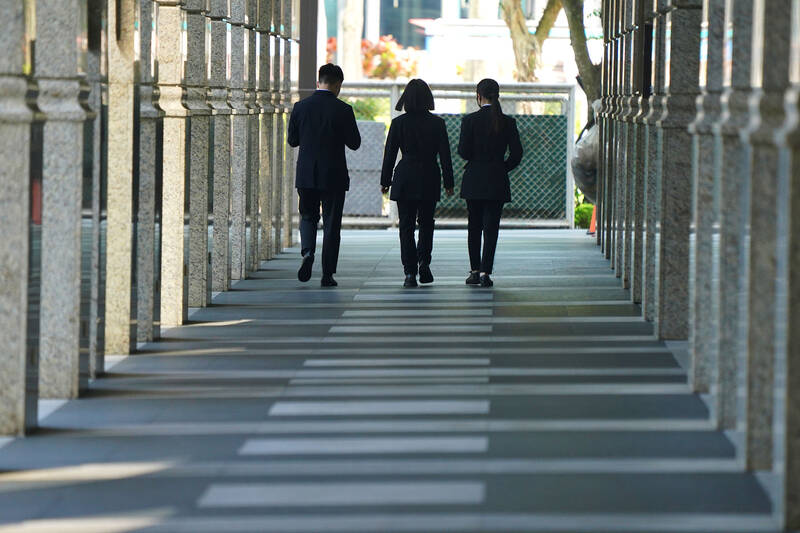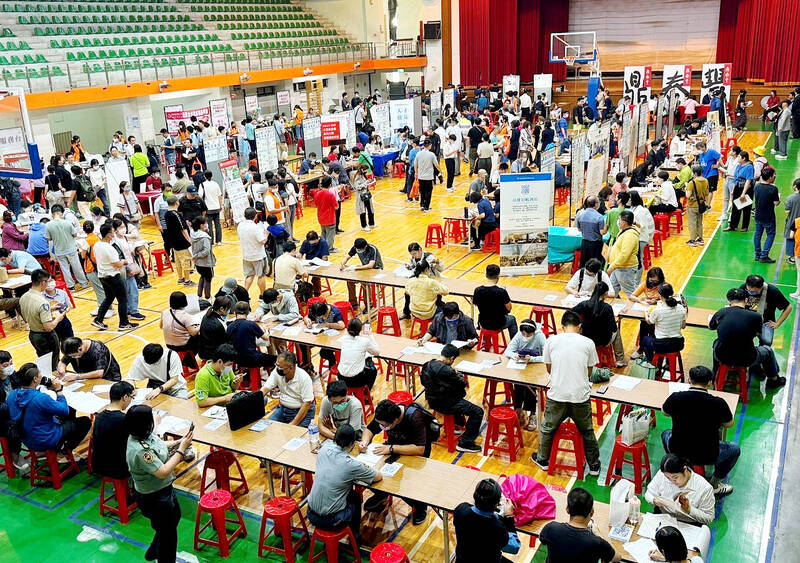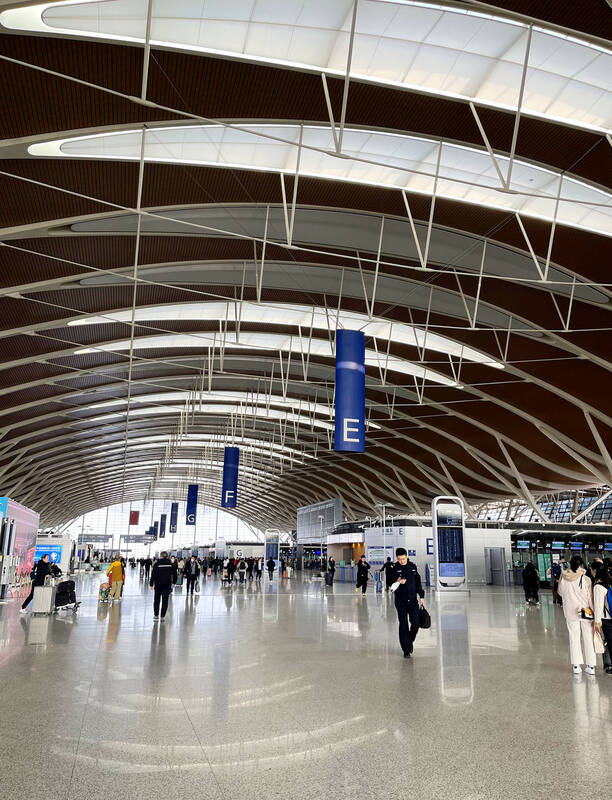Focus Taiwan reported last week that government figures showed unemployment in Taiwan is at historic lows: “The local unemployment rate fell 0.02 percentage points from a month earlier to 3.30 percent in May, the lowest level for the month in 25 years.” Historical lows in joblessness occurred earlier this year as well.
The context? Labor shortages. The National Development Council (NDC) expects that Taiwan will be short 400,000 workers by 2030, now just five years away. The depth of the labor crisis is masked by the hundreds of thousands of migrant workers which the economy absolutely depends on, and the tens of thousands working illegally. Another 800,000 people have second jobs, according to a 2018 Public Television Service report, a figure that is likely higher now as wages continue to run behind inflation. Everywhere, small businesses have signs in the windows, begging for workers.
We are just lucky the government continues to protect Taiwan jobs by preventing foreigners with spousal visas from working legally.

Photo: CNA
DEMOGRAPHIC CRISIS
The labor shortage’s root cause is the demographic crisis, as the government frequently admits. Despite years of warning and government subsidy efforts, in April only 8,684 babies were born, followed by 8,433 last month, making for 17 straight months of population decline and falling birth rates. Total births should be below 100,000 births this year — just 50,000 boys for the army in 2043.
The nation’s Total Fertility Rate (TFR) is likely to become the lowest in the world this year. Taiwan is frequently described as a vibrant democracy, but in truth we are living in a pleasant twilight, one rapidly becoming a deathwatch.

Photo courtesy of Kaohsiung City Government Labor Affairs Bureau
Meanwhile, the two major parties, the media and the public are riveted on the legislative recalls. The China-aligned parties decided upon gaining power that good public policy meant destroying governance and impeding defense, while the Democratic Progressive Party (DPP) naturally responded to that. Nothing is being done about the two crises that really matter: the demographic crisis and the climate crisis. Even if the DPP recaptures the legislature, nothing will be done about these long-term perils. Instead, the focus in the fall will be on the elections for the seats of recalled legislators, the effects of the Trump tariffs, due to kick in next month when the 90 day stay of execution expires, and whatever the news cycle decides is interesting.
The current prediction is that sometime around the late 2050s, 40 percent of the population will be over 65. At present, the figure is over 20 percent. The babies born now, coming of age in the 2040s, will be supporting four or five seniors each during their working years. Such an economy is obviously untenable. Long before that, seeing this future, Taiwan’s young people will simply leave.
TALENT EXODUS

Photo: CNA
Thanks to low salaries, 104 Job Bank surveys already show over 90 percent of first-time job seekers would consider working abroad. Last June 104 Job Bank said that the proportion of workers struggling financially reached 40 percent, the highest ever.
Project that forward a decade or two: except for a tiny leavening of excellent jobs in finance and tech, and some government work, the vast majority of jobs will have little appeal and will be begging for workers. Talented people, especially those with English skills, will leave.
Recall that Taiwan is surrounded by economies that are also begging for people. Not just the East Asian miracle economies, but Thailand and Malaysia also import workers, at present for low-end jobs like construction and food processing. That demand will change: TFR in Thailand was 0.9 last year and is still falling.
Many of my university students in the late 2000s went to Singapore to work in service and government jobs. Even the Philippines will likely need to import workers too if salaries rise. At the moment it is in a nice demographic bump, but in a decade or two it will also need people. Same with Vietnam, which saw record low birth rates in last year — its TFR is a relatively robust 1.91, but it is following the same curve.
Hence, a young person growing into this period of demographic collapse across Asia in the 2030s and 2040s will likely have many good jobs to choose from, in exotic and interesting locales a short plane ride away, all with an identical overburden of old people, likely sedate and safe. In many of them housing is far more affordable, and the cost of living lower. Recall that rent is skyrocketing in Taiwan, following the housing price rises and Central Bank interest rate hikes.
Asia is already the preferred outbound destination for Taiwanese. Indonesia, Vietnam, Brunei, Thailand, Malaysia and Singapore already host significant Taiwanese populations. That is a list of nice places to live, with excellent food, good access to leisure and travel, great weather, and decent housing choices.
HOW CAN TAIWAN COMPETE?
How can Taiwan compete with them? The answers are obvious, and involve many of the same wrenching changes to the work culture and political economy that could be used to address the underlying demographic crisis: much higher salaries, remote work, walkable cities with cheap public transportation, shorter work hours, affordable health care, realistic labor insurance schemes, flex time, clean air, plentiful leisure activities that are close to nature, and so on. All things that would be good to do in and of themselves, never mind as part of utilitarian policy to retain labor. Without these changes, talented young people are not going to relocate to Taiwan, nor stay long if they do.
But first, Taiwanese officials have to imagine that Taiwan is in a global competition for a rapidly shrinking regional pool of young workers, and the nation’s leadership refuses to do that. The labor component of the New Southbound Policy focuses on bringing in talent from the nations to the south and on Taiwanese working in the area as officials of investing firms or in tech exchanges, but does not consider that Taiwan might shortly be exporting its own young to those nations.
Taiwan’s leadership does not appear to consider the flip side of their racist rejection of a rational immigration policy: no immigration inevitably means out-migration. As the population falls, everyone will see that the nation has no future, and people young enough to sell their labor elsewhere will leave.
How much longer can this pleasant twilight linger?
Notes from Central Taiwan is a column written by long-term resident Michael Turton, who provides incisive commentary informed by three decades of living in and writing about his adoptive country. The views expressed here are his own.

Many people noticed the flood of pro-China propaganda across a number of venues in recent weeks that looks like a coordinated assault on US Taiwan policy. It does look like an effort intended to influence the US before the meeting between US President Donald Trump and Chinese dictator Xi Jinping (習近平) over the weekend. Jennifer Kavanagh’s piece in the New York Times in September appears to be the opening strike of the current campaign. She followed up last week in the Lowy Interpreter, blaming the US for causing the PRC to escalate in the Philippines and Taiwan, saying that as

Nov. 3 to Nov. 9 In 1925, 18-year-old Huang Chin-chuan (黃金川) penned the following words: “When will the day of women’s equal rights arrive, so that my talents won’t drift away in the eastern stream?” These were the closing lines to her poem “Female Student” (女學生), which expressed her unwillingness to be confined to traditional female roles and her desire to study and explore the world. Born to a wealthy family on Nov. 5, 1907, Huang was able to study in Japan — a rare privilege for women in her time — and even made a name for herself in the

This year’s Miss Universe in Thailand has been marred by ugly drama, with allegations of an insult to a beauty queen’s intellect, a walkout by pageant contestants and a tearful tantrum by the host. More than 120 women from across the world have gathered in Thailand, vying to be crowned Miss Universe in a contest considered one of the “big four” of global beauty pageants. But the runup has been dominated by the off-stage antics of the coiffed contestants and their Thai hosts, escalating into a feminist firestorm drawing the attention of Mexico’s president. On Tuesday, Mexican delegate Fatima Bosch staged a

Would you eat lab-grown chocolate? I requested a sample from California Cultured, a Sacramento-based company. Its chocolate, not yet commercially available, is made with techniques that have previously been used to synthesize other bioactive products like certain plant-derived pharmaceuticals for commercial sale. A few days later, it arrives. The morsel, barely bigger than a coffee bean, is supposed to be the flavor equivalent of a 70 percent to 80 percent dark chocolate. I tear open its sealed packet and a chocolatey aroma escapes — so far, so good. I pop it in my mouth. Slightly waxy and distinctly bitter, it boasts those bright,